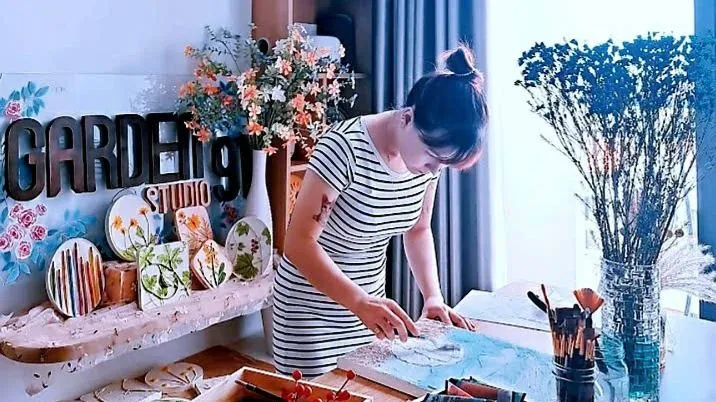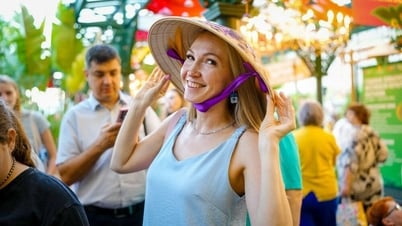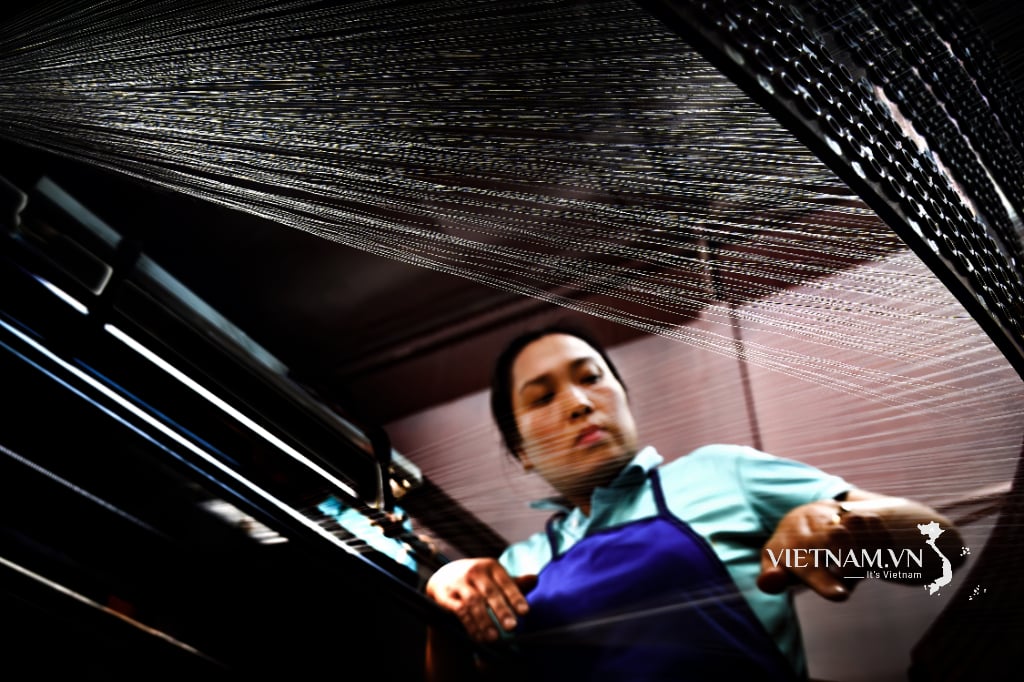Profession with plants
3D flower sculpture (sculpture painting), or botanical specimens, is a combination of drawing and sculpture, creating shapes directly on a flat surface (canvas, wood, plaster, etc.) using solid, viscous materials. Different from storing images of plants by pressing them dry, the main technique here is to use a sculpting trowel to create each petal and leaf pattern detail. This art was imported from France and Russia with sharp, stylized simulations of petals in a luxurious, modern style.
“I was fortunate to know about this subject, then I explored it little by little, learning online. Most of the clips online do not give detailed instructions, but mainly teach in a way that is for people who already have the profession, so to go from zero to creating beautiful paintings, I mainly explore and create on my own. I consider that to be the joy, something I strive to pursue. Because no matter what I learn, the basics can be taught, but the essence must be found by yourself,” artist Hai Yen shared.
Painter Hai Yen pursues emotional paintings
The secret to creating a soulful specimen or sculpture is the materials and shaping techniques. Different types of materials will create different textures on the finished product such as unique veins and cracks to create tree bark, animals, or smoothness to create thin, sharp flower petals...
A flower branch in the garden, a blade of wild grass by the roadside, a few colored pencils on the table look very ordinary, but when painted, they are very graceful and soulful. This lies in the composition (parallel, diagonal, overlapping or draping leaves as if climbing through the frames...) and the description of color.
The colors used can be acrylic (synthetic polymer resin) expressed in watercolor techniques (gradients of colors, basic color mixing and matching, simply to depict the most realistic shades of flowers and objects). Besides the realistic style, the yin-yang technique can also be used with pastels, helping the painting have visual depth, with light and dark areas like mood and a shelter story.
This type of painting is used in high-end home decoration (unique wall paintings, nameplates, signs of handmade art stores), gift box decoration, or even used as a spiritual therapy.
Keep things unsaid
Four years ago, artist Hai Yen began introducing this art form to art lovers, giving them the opportunity to approach a sophisticated and meticulous style that is not “out of reach”. If there is an instructor, this art form only requires participants to have a high level of patience, because flowers and leaves are fragile, easily torn, have many pistils, require many complex and meticulous details, and take many days to complete a work, without requiring any special talent.
People who love this type of painting are often those who have strong feelings for nature, are moved by the beauty of tree branches and blades of grass; want to preserve the image of the first fruit of a self-grown bitter melon branch, a grape branch planted by a father, a rose branch given by a lover... However, each person, depending on their temperament, has different choices for creating the shape of their favorite flower.
Some people like sturdy flowers with few petals, not too thin petals (like orchids) and leaves with many veins, showing strength and easy to shape. But others like thin, small flowers with many details, requiring a lot of time and patience. Some people also choose to sculpt souvenirs and objects that have a meaning of time such as pens, keys, old wooden and plastic toys of their children...
Painter Hai Yen shared: “There was a time when I was in crisis due to family events, art became my savior. After having the opportunity to learn about sculpture and models, I spent time every morning, letting go of all the bad thoughts in my head, focusing on making paintings. Everything just went by, I gradually calmed down and thought: maybe many people can be healed through this subject like me!”.
From then on, Hai Yen began to introduce this subject to everyone. At first, students came mainly out of curiosity about the strange art school, but with a friendly instructor, combined with a "chill chill" space (relaxing, comfortable, stress-free)... gradually students also learned to let go of negative issues, easily open up to share, and release feelings that sometimes words cannot fully express.
KIND HEART
Source: https://www.sggp.org.vn/khac-lai-net-dieu-dang-cua-thien-nhien-post807023.html



























![[Photo] Nghe An: Provincial Road 543D seriously eroded due to floods](https://vphoto.vietnam.vn/thumb/1200x675/vietnam/resource/IMAGE/2025/8/5/5759d3837c26428799f6d929fa274493)









































































Comment (0)